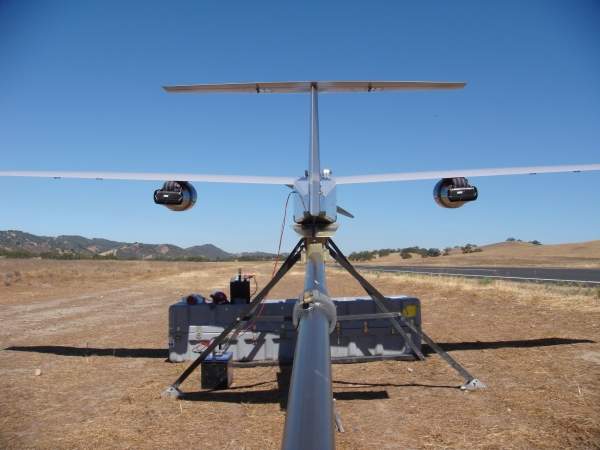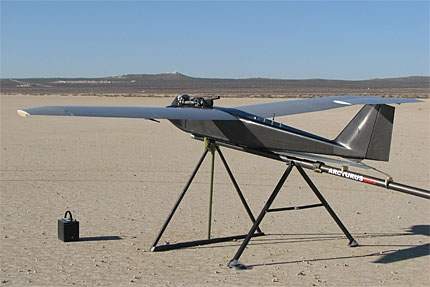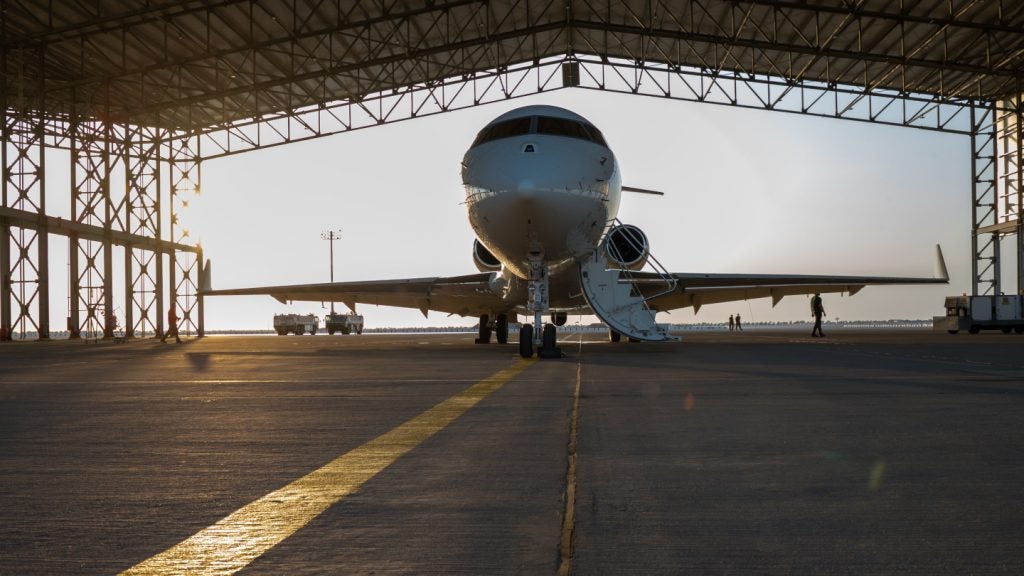T-20 is a medium range tactical unmanned aerial vehicle (UAV) system designed and manufactured in the US by Arcturus-UAV for the United States Armed Forces. The system comprises two aerial vehicles, a ground control station (GCS), a portable launcher and a support trailer for payload and personnel.
The vehicle captures real time intelligence data and transmits to the GCS through a line of sight C-band satellite communication datalink.
Flying up to a maximum altitude of 15,000ft, the T-20 can provide its operators with real time intelligence data by carrying out surveillance and reconnaissance operations over a large area.
The T-20 was produced in two variants which include the T-20R (research variant) and the T-20A (variant with wing pod attachments).
Design of the Arcturus T-20 UAV
The T-20 is a high wing monoplane design made up of carbon fibre composite materials.
It is a runway independent UAV designed to operate on dirt, desert, unprepared, grass and gravel roads.
It can execute intelligence, surveillance and reconnaissance (ISR) missions even in hostile environments.
The 2.8m long and 5.2m wide aerial vehicle was designed to launch from a runway or mobile platforms such as ships through a pneumatic catapult launcher system and can be recovered either by belly landing or by net capturing.
Development of the medium range tactical unmanned aerial vehicle
The development of the T-20 began in 2009 at Rohnert Park in California, US. It is a robust Tier II class UAV and can carry 30kg of payload on a detachable payload pallet system.
The maiden flight of the first T-20 prototype took place in January 2009 at Edwards Air Force Base, US. The aircraft carried out its first mission at the US Army Dugway Proving Ground in Utah in May 2009. The first air drop test was accomplished at the US Naval Postgraduate School’s Center in August 2009.
Features of the United States Armed Forces’ T-20
The Arcturus T-20 features a modular composite airframe, a large internal payload, a GPS bay, Iridium Satcom, target laser, 100L wing tank, 500W alternator, aluminium tail booms and two-bladed propeller at the nose section.
The retractable electro-optic camera incorporated beneath the centreline fuselage section renders a full 3600 unimpeded field of view and captures the imagery of the field it surveys.
The vehicle is equipped with advance avionics in the rear fuselage section. The avionics can be accessed from three different locations. The vehicle has four optional hardpoints for wing pods which incorporate WMD sensors, snowflake, ten pounds of laser guided missiles and drop munitions.
Navigation of the Arcturus manually or autonomously
The T-20 can be controlled either manually from the GCS or through autonomous mode. It houses a GPS based Cloud Cap Piccolo II autopilot with waypoint navigation which receives multiple flight plans from the control station for landing automatically on the specified location.
The T-20 is equipped with electro-optic (EO) and infra-red (IR) sensors and electronic intelligence sensors (ELINT, COMINT).
The Arcturus T-20 is powered by a single fuel injected 190cc four stroke Honda engine rated at 7.5kW of output power.
The ground control station of the T-20 is a compact and lightweight system designed and built by Arcturus UAV. It is equipped with a laptop computer to display real time imagery or videos transmitted by the vehicle’s payload cameras.
An additional laptop will also be provided in the GCS to control communications payload.
The GCS can process, retrieve, store and monitor the information transferred by the aircraft to control the Piccolo II autopilot and manage its payloads. It can be easily configured for autopilot missions. The vehicle and the GCS can be easily assembled or dismantled in few minutes.
Performance of the Arcturus T-20 unmanned aerial vehicle
The T-20 can fly at a maximum speed of 167km/h. Its cruise speed is 102km/h. The range and service ceiling of the aircraft are 805km and 4,572m respectively. The aircraft can loiter in the air for a maximum of 16 hours.
The Global Unmanned Aerial Vehicles (UAV) Market 2011-2021
This project forms part of our recent analysis and forecasts of the global Unmanned Aerial Vehicles (UAV) market available from our business information platform Strategic Defence Intelligence. For more information click here or contact us: EMEA: +44 20 7936 6783; Americas: +1 415 439 4914; Asia Pacific: +61 2 9947 9709 or via email.











